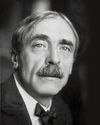
This summer, I rode south from Beirut on Route 51, the highway that runs along the Mediterranean toward Israel. Beirut is a city of many faiths, but less than an hour to the south is Lebanon's Shiite heartland.
Passing the ancient Phoenician city of Sidon, I entered a region where mosques stood in every town. Wall-size portraits depicted the sect's icons, Hussein and Ali, and flags and symbols announced the presence of the Party of God, better known by its Arabic name, Hezbollah. In each village along the route hung banners with the faces of Hezbollah soldiers killed fighting Israel, the group's great enemy. In Seddiqine, men were clearing the wreckage of a home flattened the night before by an Israeli bomb; a Hezbollah flag fluttered atop the rubble. "This is an everyday thing," one of the men told me.
Hezbollah has been in conflict with Israel since the group was founded, in the nineteen-eighties, but in the past year the fighting has grown dangerously intense. On October 7th, Hamas militants surged across Israel's southwestern border and killed more than eleven hundred people. The next day, Hezbollah fired into Israel from the north, launching a volley of rockets that provoked a retaliatory strike. Since then, the shelling and bombing by each side have intensified, stoking fears of an allout war that would devastate the region.
The farther south I rode, the more ravaged and empty the landscape was.
In Tebnine, as a pair of ambulances raced through traffic, I passed a billboard showing seventeen more Hezbollah fallen.
"They paid with their lives!" it said. In the village of Haddatha, a cemetery was almost entirely given over to Hezbollah, each tomb set with a portrait of a young man who died in his prime.
Diese Geschichte stammt aus der July 29, 2024-Ausgabe von The New Yorker.
Starten Sie Ihre 7-tägige kostenlose Testversion von Magzter GOLD, um auf Tausende kuratierte Premium-Storys sowie über 8.000 Zeitschriften und Zeitungen zuzugreifen.
Bereits Abonnent ? Anmelden
Diese Geschichte stammt aus der July 29, 2024-Ausgabe von The New Yorker.
Starten Sie Ihre 7-tägige kostenlose Testversion von Magzter GOLD, um auf Tausende kuratierte Premium-Storys sowie über 8.000 Zeitschriften und Zeitungen zuzugreifen.
Bereits Abonnent? Anmelden

HOLIDAY PUNCH
\"Cult of Love\" on. Broadway and \"No President\" at the Skirball.

THE ARCHIVIST
Belle da Costa Greene's hidden story.

OCCUPY PARADISE
How radical was John Milton?

CHAOS THEORY
What professional organizers know about our lives.

UP FROM URKEL
\"Family Matters\" and Jaleel White's legacy.

OUTSIDE MAN
How Brady Corbet turned artistic frustration into an American epic.

STIRRING STUFF
A secret history of risotto.

NOTE TO SELVES
The Sonoran Desert, which covers much of the southwestern United States, is a vast expanse of arid earth where cartoonish entities-roadrunners, tumbleweeds, telephone-pole-tall succulents make occasional appearances.

THE ORCHESTRA IS THE STAR
The Berlin Philharmonic doesn't need a domineering maestro.

HEAD CASE
Paul Valéry's ascetic modernism.